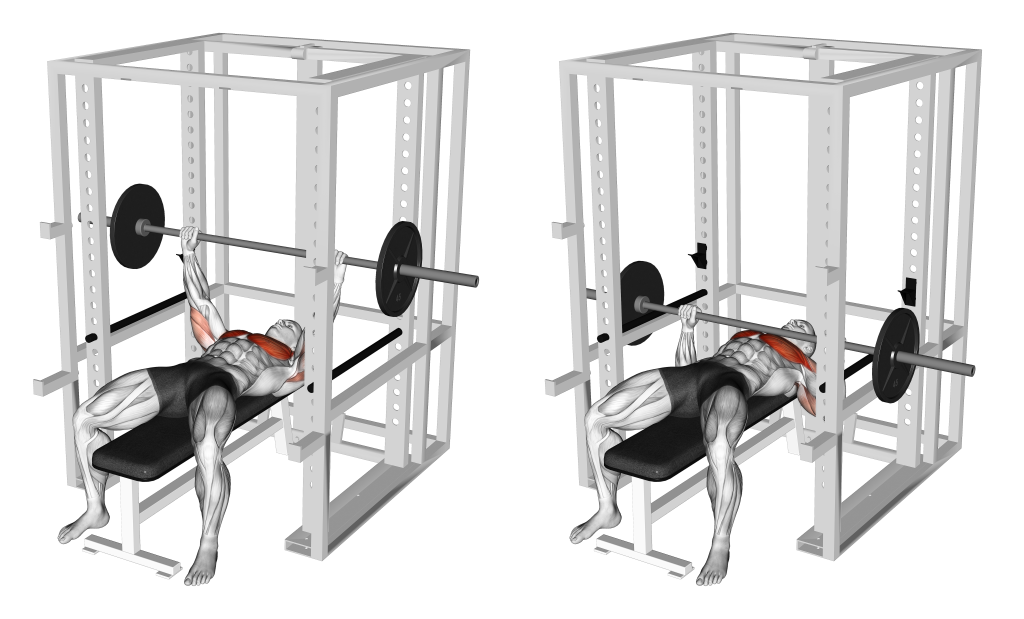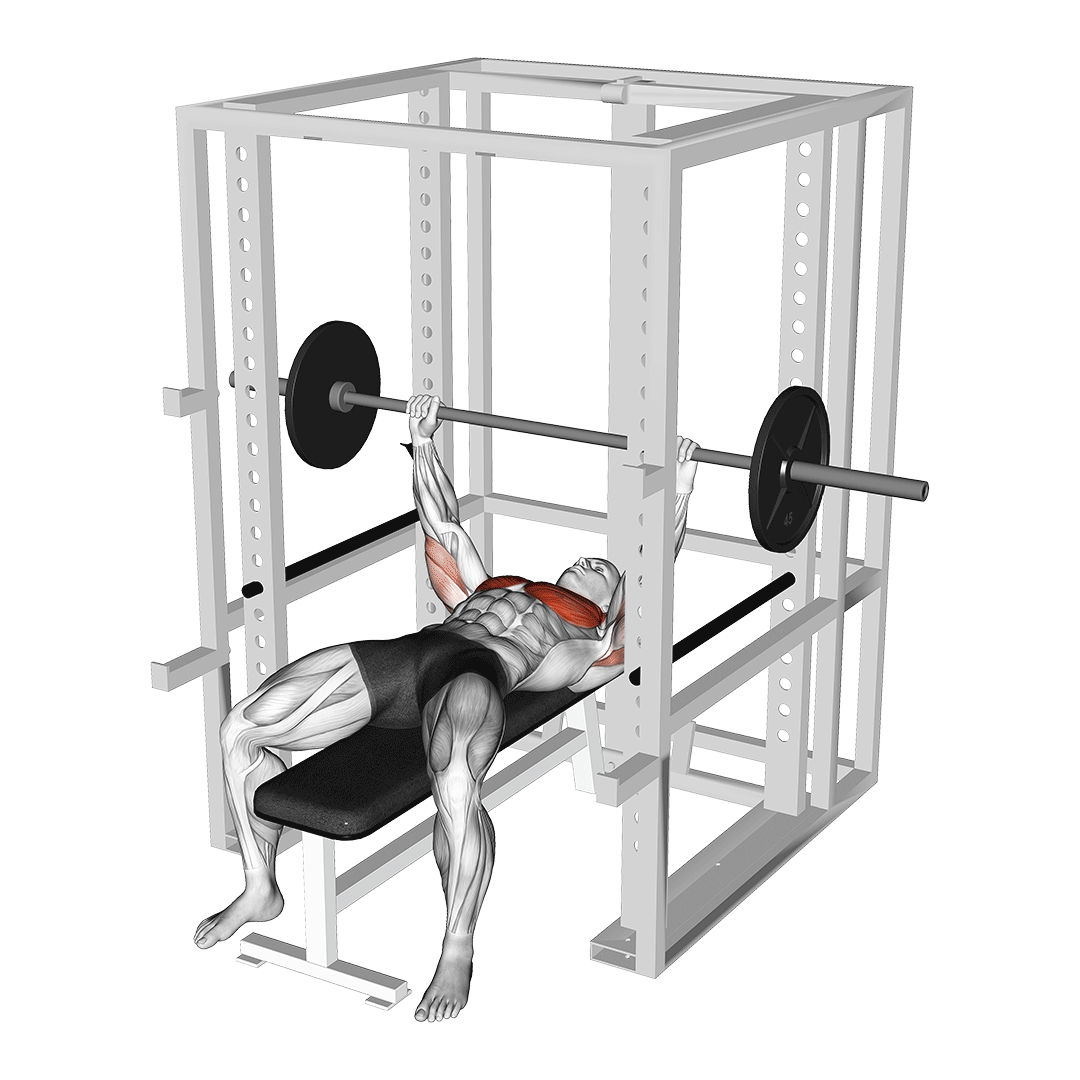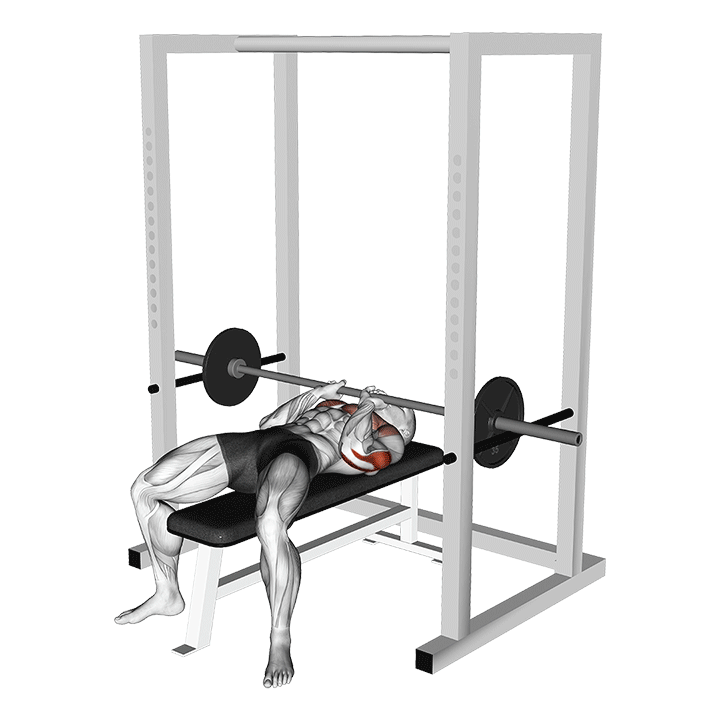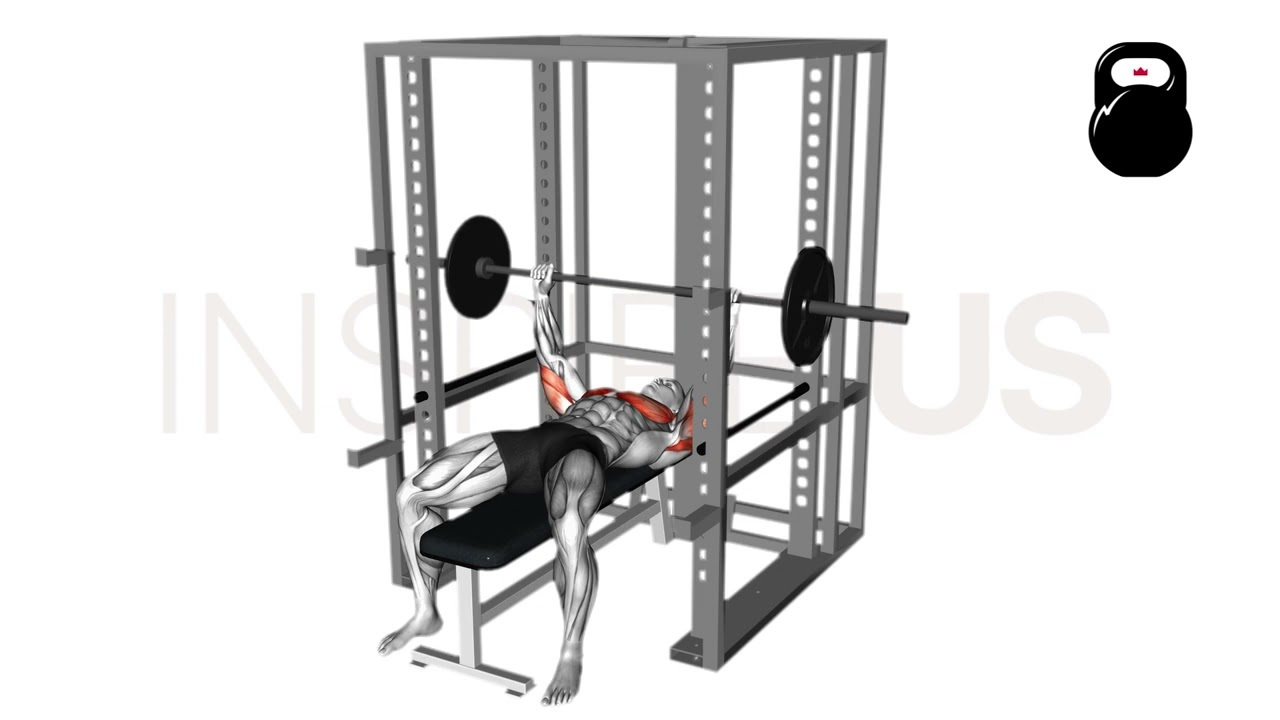Pin Press: Muscles Worked and More
The pin press is a barbell bench press variation involving a shortened range of motion - primarily through the use of a barbell rack’s safety pins.
However, despite its benefits, the pin press is highly situational and may not be suitable as the main horizontal pressing movement of a training program.
Pin Press at a Glance
Equipment Requirements
Rack/Cage With Safety Pins, Barbell, Weight Plates, Bench
Main Muscles Targeted
Triceps Brachii, Pectorals, Anterior Deltoids
Difficulty
Advanced
Sets, Reps, and Load Recommendations
3-5 Sets of 5-10 Repetitions at a Heavy Load
How to Do a Pin Press
- To perform a repetition of the pin press, the lifter will begin by first adjusting the safety pins to the correct height. This is largely dependent on the lifter’s stance and proportions, but should ideally be just below the sticking point or weakness in their bench press technique.
For example; if the lifter is having issues at full lock-out, the bar will rest on the pins several inches beneath full elbow extension. - With the safety pins now at the correct height, the lifter will lie atop the exercise bench, scapula retracted, lower back arched and glutes pressed into the bench as they set their hands approximately shoulder-width apart along the bar.
- Now in the correct stance, the lifter unracks the bar and slowly lowers it down to the pins, allowing the bar to come to a full stop once it makes contact.
- Once the bar is arrested by the pins, the lifter explosively drives through their palms and presses the arms into full extension as rapidly as possible.
- Arms now fully extended with the bar back at its original starting height, the repetition is now considered to be complete.
Additional Tips:
The height of the pins should be adjusted to account for deficits in bench press technique. Instability or weakness just off the chest will require a lower pin setting than issues in the mid-range or at lockout.
Outside of correcting bench technique, the pin press can also be used for limiting range of motion in cases where an injury is aggravated by the full ROM of a conventional bench press.
What Muscles Do Pin Presses Work?
Pin presses are a compound exercise, targeting more than a single muscle group throughout its range of motion. These are much the same as other chest press exercises - being the triceps brachii, pectorals and anterior deltoid heads.

However, the extent to which each muscle is worked will depend on the height of the pins.
Generally, the higher the pins, the more triceps brachii will be emphasized. The lower, the more the chest and anterior deltoids come into play.
Common Pin Press Mistakes to Avoid
In order to reap the most benefit from each repetition of the pin press, avoid making the following common mistakes.
Incorrect Safety Pin Adjustments
The most pivotal aspect of the pin press is the position of the safety pins themselves.
Setting them too high will defeat the entire purpose of the exercise and fatigue the triceps without much appreciable benefit.

Likewise, setting the pins too low may expend more energy than needed, limiting how much volume and time the lifter can spend in the necessary range.
The pins should be at a height several inches beneath the lifter’s sticking point or instability when performing a conventional bench press.
Failing to Retract Shoulder Blades
As is the case with most other bench press variations, failing to retract the shoulder blades can greatly increase the risk of shoulder joint injury - alongside a host of other issues relating to stability and safety.
Prior to beginning each set of the pin press, the lifter should retract their shoulder blades fully before depressing them and pressing their upper back into the bench. This should secure their position throughout the entire set and provide excellent stability to the entire trunk.
Using a Narrow Grip
Whether the lifter is performing a pin press for technique correction, triceps emphasis or to work around an injury - using a grip that is narrower than their conventional bench press stance negates many of the benefits of the pin press.

By placing the hands closer together along the bar, the lifter widens the range of motion of the exercise, as the arms will need to travel further in order to reach the top of the repetition.
Apart from losing specificity and carryover to the bench press, doing so will only further alienate the pectoral and deltoid muscles from the movement pattern.
Failing to Fully Stop the Bar
The pin press is most effective when the bar comes to a dead stop along the safety pins, requiring maximal drive from the chest and triceps to press back into lockout.
Bouncing the bar off the pins - or, worse, failing to touch them entirely - will not only negate much of the speed and power development driven by the pin press, but also affect overall form as the arms will absorb more momentum than needed.
Each pin press repetition should ideally feature an apex with the bar resting atop the pins for 1-2 seconds, entirely arresting any momentum that may be present.
Who Should Do the Pin Press?
The pin press is considered to be an advanced-level exercise simply due to the niche cases in which it is meant to be used.
In actuality, it is safer and somewhat less complex than the conventional bench press - but also far less comprehensive or effective for general muscular growth.
If you are a powerlifter with bench press technique issues, an individual suffering from shoulder problems or a bodybuilder in need of a close grip bench alternative; the pin press is for you.
References
1. Benedikt Mitter, Lei Zhang, Pascal Bauer, Arnold Baca & Harald Tschan (2023) Modelling the relationship between load and repetitions to failure in resistance training: A Bayesian analysis, European Journal of Sport Science, 23:7, 1203-1213, DOI: 10.1080/17461391.2022.2089915

